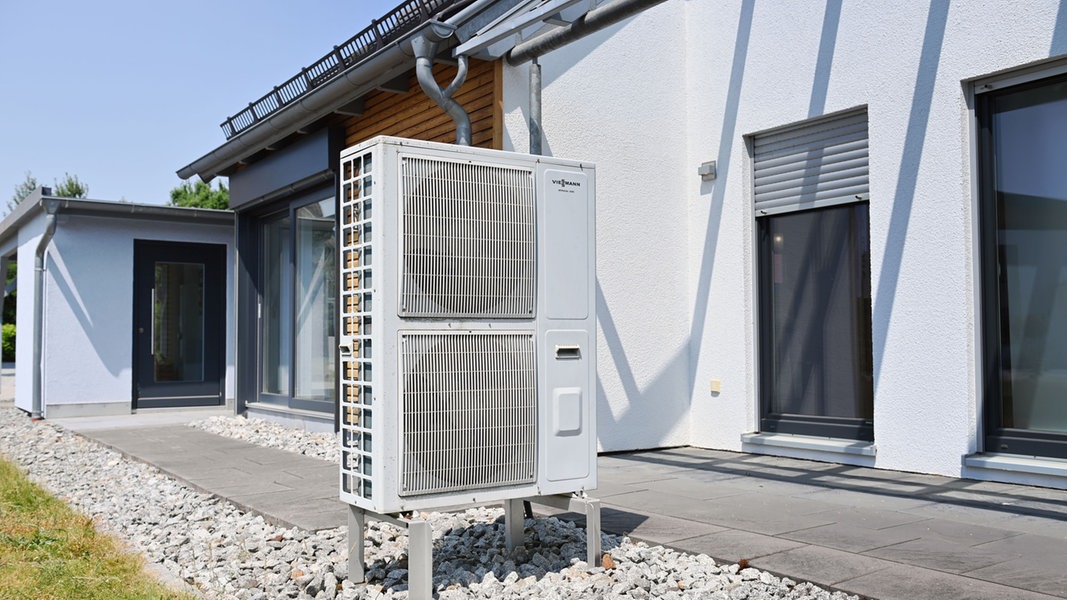The new Building Energy Act is scheduled to come into force on January 1, 2024.
From January 1, 2024, every newly installed heating system should at least 65 percent are operated with renewable energies. For the time being, nothing will change for existing, functioning heating systems, they may continue to run for the time being. A transitional period applies to new heating systems in existing buildings. During this period, owners should consider their options as to whether to switch to a heating system that uses mainly renewable energy, such as a heat pump, or whether they can be connected to a district heating network.
No. Existing heaters, such as oil or gas heaters, can continue to run and may also be repaired. They only have to be replaced after a total failure (“damage”). However, there is a time limit: From 2045, no more heating may be operated with natural gas or heating oil.
If the heating can no longer be repaired, a new heating system must be installed that is operated with at least 65 percent renewable energy. There is a transitional period for this, which is generally three years, and up to 13 years for gas floor heating systems. A used heating system that runs on fossil fuels may also be installed temporarily. If a connection to a heating network is foreseeable, a transitional period of up to ten years applies.
Owners who are 80 years or older and live in a building with up to six apartments themselves do not have to install a new heating system based on renewable energies if the old heating system breaks down. This conversion obligation does not apply to them. The same applies to 80-year-old owners who live in their own apartment when replacing floor heating systems.
Yes. In 2023 – and under certain conditions also from 2024 – house and apartment owners can still install a heating system that is operated entirely with gas. However, you should think twice about this step: the new installation of a gas heating system is initially relatively inexpensive compared to a heat pump, for example. However, it is foreseeable that gas prices will rise significantly in the coming years – if only because of the increase in the price of CO2. Fossil fuel heating systems must also be switched off by 2045 at the latest.
From 2024, newly installed heating systems must contain at least 65 percent renewable energy. Homeowners have various options for this: connection to a (distant) heating network, a heat pump, direct electricity heating, hybrid heating (e.g. a combination of heating with renewable energies and a gas or oil boiler) or solar thermal energy. In addition, under certain conditions, according to the coalition compromise, gas heaters may continue to be installed, provided that they are operated with at least 65 percent biogas or can be converted to hydrogen (“H2-ready”).
Anyone installing the new heating system in an existing building rather than in a new building also has the option of a biomass heating system, such as a pellet or woodchip heating system, as well as a gas heating system that has been proven to contain at least 65 percent renewable gases (biomethane, biogenic liquid gas, hydrogen). uses.
If the existing heating system breaks down, homeowners have three years to install a new heating system that uses 65 percent renewable energy. If it is foreseeable that the house can be connected to a district heating network in the future, there is even a period of ten years. In the case of gas floor heating, the period is 13 years. For the transitional periods, a used heating system powered by fossil fuels may also be installed.
The federal government provides extensive funding for the replacement of the heating system. For this purpose, the previous subsidy rates will be slightly changed. In the future there will be a uniform subsidy rate of 30 percent for exchanging an old, fossil-based heating system for a new, climate-friendly one – regardless of the type of heating. In addition to the 30 percent, there should be three different “climate bonuses”, i.e. increased subsidy rates. For example, anyone who replaces their old heating system, although they are not obliged to do so due to one of the exemptions, receives an additional 20 percent subsidy. Recipients of so-called income-related transfer payments, such as recipients of housing benefit, receive an equally high bonus.
Anyone who is obliged to exchange but “over-fulfills” the requirements, i.e. does more than is required by law, receives a climate bonus of 10 percent. In addition to the subsidies, there are special subsidy loans for replacing the heating system, as well as opportunities to claim the costs for tax purposes.
